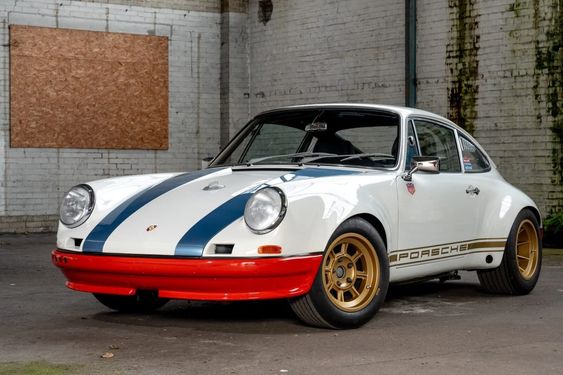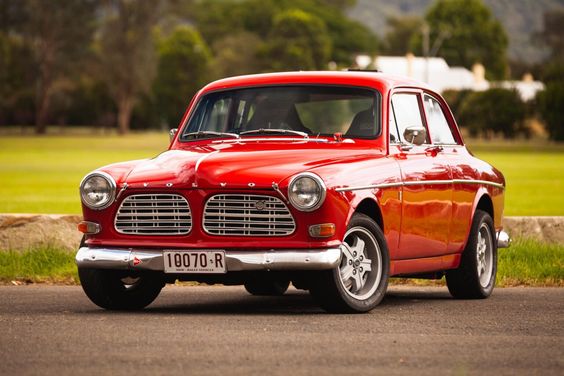
Collectible cars occupy a fascinating niche in the automotive world, coveted by enthusiasts and investors alike for their unique blend of history, design, and rarity. But what exactly makes a car collectible? The answer lies in a combination of factors that elevate certain vehicles beyond mere transportation to the status of treasured artifacts. In this blog post, we will explore the defining characteristics of collectible cars and why they hold such significant value in the eyes of collectors.

1. Rarity
One of the most critical factors that make a car collectible is its rarity. The fewer units of a particular model produced, the more likely it is to be sought after. Rarity can result from limited production runs, unique variants, or the survival rate of the car over time.
Limited Production Runs
Cars produced in small numbers are inherently more collectible. Manufacturers sometimes release special editions with unique features, such as the Ferrari 250 GTO, with only 36 units made. These cars often come with distinctive design elements, performance enhancements, or commemorative badges that set them apart from their mass-produced counterparts.
Unique Variants
Within a single model line, certain variants can become more collectible due to their unique specifications. For instance, the Porsche 911 Carrera RS 2.7 is more collectible than other 911 models from the same era because of its racing pedigree and limited production.
2. Historical Significance
A car’s place in history can greatly influence its collectibility. Vehicles that marked significant milestones in automotive development or that were associated with notable events or personalities often become highly prized.

Technological Innovations
Cars that introduced groundbreaking technologies or design philosophies tend to become collectible. For example, the Audi Quattro revolutionized rally racing with its pioneering all-wheel-drive system, making it a sought-after collectible.
Cultural Impact
Cars that have made a significant impact on popular culture also achieve collectible status. The DeLorean DMC-12, immortalized by the “Back to the Future” film series, is a prime example of a car whose cultural significance has greatly enhanced its desirability.
3. Condition and Originality
The condition of a car is paramount when determining its collectibility. Collectors seek cars that are either well-preserved in their original state or have been meticulously restored to their factory specifications.

Well-Preserved Originals
A car that has been maintained in excellent original condition is often more valuable than one that has been restored. Originality in terms of paint, interior, and mechanical components adds to the car’s authenticity and appeal. Low mileage and minimal modifications further enhance a car’s collectibility.
High-Quality Restorations
Restorations can also add value, provided they are done to a high standard and adhere to the car’s original specifications. Authenticity is key, with original parts and materials preferred over aftermarket replacements. A professionally restored car can often command a premium price if it accurately reflects the original build.
4. Provenance
A car’s history, including its previous ownership and documented background, plays a crucial role in its collectibility. Provenance can add a narrative that enhances the car’s allure and value.
Famous Ownership
Cars previously owned by celebrities, notable figures, or influential personalities often become highly collectible. For instance, a vehicle once owned by Steve McQueen or Elvis Presley would attract significant interest from collectors.
Documented History
Comprehensive documentation, including service records, factory build sheets, and historical photographs, can substantiate a car’s provenance and authenticity. This detailed history reassures potential buyers and adds to the car’s value.
5. Desirability and Market Demand
The desirability of a car is influenced by current market trends and collector preferences. Certain models consistently remain in high demand due to their reputation, performance, and aesthetic appeal.

Iconic Models
Cars that have achieved iconic status due to their design, performance, or success in motorsports often remain desirable regardless of market fluctuations. The Jaguar E-Type, with its timeless design and storied racing history, is a prime example of a car that maintains consistent demand.
Market Trends
Collector preferences can shift based on various factors, including generational shifts and media influence. For instance, cars from the 1980s and 1990s are currently experiencing a surge in popularity as younger collectors seek the vehicles they grew up admiring.
6. Performance and Driving Experience
Performance cars often become collectible due to their superior engineering and exhilarating driving experience. High-performance models from brands like Ferrari, Lamborghini, and Porsche consistently attract enthusiasts who appreciate the blend of speed, handling, and design.
Engineering Excellence
Cars known for their engineering excellence, such as the Mercedes-Benz 300SL Gullwing with its innovative fuel injection system and iconic gullwing doors, are highly prized for their technological advancements and driving dynamics.
Motorsport Heritage
Vehicles with a successful motorsport heritage are also highly sought after. Racing pedigree adds a layer of prestige and performance credibility, as seen with models like the Ford GT40, celebrated for its victories at the 24 Hours of Le Mans.
Conclusion
Collectible cars are more than just vehicles; they are pieces of history, symbols of innovation, and embodiments of cultural significance. The characteristics that make a car collectible—rarity, historical significance, condition and originality, provenance, desirability, and performance—combine to create a unique allure that captivates enthusiasts and investors alike. Understanding these factors can help you appreciate the nuances of the collectible car market and guide you in making informed decisions, whether you’re looking to start your collection or add to an existing one.
In the ever-evolving world of collectible cars, staying informed and passionate about automotive history and trends is key to recognizing and appreciating these rolling works of art. Whether it’s the rarity of a limited-production model, the historical significance of a groundbreaking design, or the allure of a car with a storied past, the world of collectible cars offers a rich tapestry of stories and experiences waiting to be discovered and cherished.



